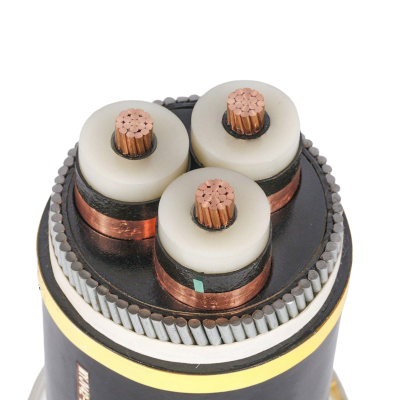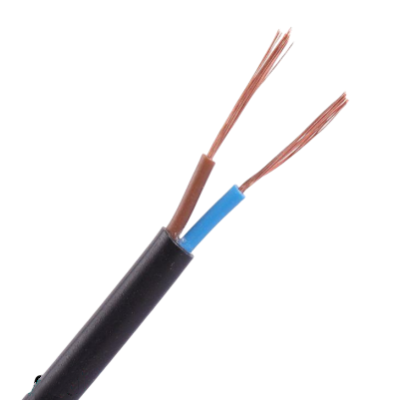Electrical systems are the backbone of modern buildings, enabling essential functions such as lighting, heating, cooling, and powering devices. Without a well-designed electrical infrastructure, it would be impossible to meet the energy demands of today’s urban environments. These systems ensure not only the functionality of buildings but also the safety and comfort of occupants.
Historically, electrical systems in buildings have evolved significantly, from the basic lighting systems of the 19th century to today’s complex smart grids. Understanding the components and principles of these systems is vital for architects, engineers, and property owners to ensure that their buildings meet modern safety, efficiency, and sustainability standards.

Key Components of Building Electrical Systems
1. Wiring and Cables
Wiring and cables form the circulatory system of any building’s electrical setup, transporting electricity to where it is needed. Proper cable selection ensures system reliability and safety.
Common types of cables include
– Low-voltage cables: Used for data transmission and communication, critical in smart buildings with advanced automation systems.
– Power cables: Essential for supplying electricity to high-power devices like HVAC systems and industrial machinery. Cables like H07RN8-F, known for their durability, are frequently used in such applications.
– Optical fiber cables: Enable high-speed internet and advanced communication, making them indispensable in commercial buildings.
2. Distribution Equipment
Distribution equipment forms the backbone of any electrical system, managing and regulating the flow of electricity to ensure safe and efficient power distribution throughout the building. This equipment includes switchboards, circuit breakers, and transformers, each serving distinct and critical functions.
Switchboards
Switchboards are responsible for distributing power to different sections of a building. Typically located in control rooms or dedicated electrical spaces, they are designed for easy maintenance and modular expansion. For instance, in a commercial building, a switchboard can allocate power independently to lighting, HVAC systems, elevators, and other devices, minimizing interference and enhancing energy management efficiency.
Circuit Breakers
Circuit breakers are essential safety devices within distribution equipment. They automatically cut off power during circuit overloads or short circuits, preventing wires from overheating, equipment damage, or even fires. Modern circuit breakers also support remote control, enabling quick disconnection or reconnection, which is particularly vital for smart building management.

Transformers
Transformers play a key role in regulating voltage levels. For example, high-voltage electricity from the public grid needs to be stepped down by transformers before it can be safely used by residential or office equipment. Conversely, in industrial settings, certain machinery may require specialized high or low voltage, which transformers provide. High-efficiency transformers can significantly reduce energy losses, making them a priority when selecting equipment.
Modern Applications and Advantages of Distribution Equipment
Smart Control:
Many modern distribution devices are integrated with smart technologies, such as real-time monitoring and automated operations. Using intelligent panels, property managers can monitor the building’s entire power distribution system via a smartphone or computer, easily identifying and resolving issues. This smart control also supports energy optimization, further improving energy efficiency.
Modular Design:
Advanced distribution equipment often adopts a modular design, allowing easy upgrades when buildings are expanded, or load demands change. For instance, if a commercial building adds a new floor, a modular distribution system can quickly accommodate additional circuits without requiring extensive modifications to existing equipment.
Safety and Reliability:
Modern distribution equipment is designed with safety in mind. Features such as double insulation and fire-resistant materials reduce the risk of fires. Additionally, automatic diagnostic functions can issue alerts when irregularities occur, giving maintenance personnel time to address problems before they escalate.
3. Control Systems and Smart Technologies
Modern buildings increasingly rely on smart electrical systems for automation and energy efficiency. Smart panels and IoT-enabled devices allow real-time monitoring and control of electricity usage.
– Smart lighting systems adjust based on occupancy and natural light levels, reducing energy consumption.
– Building Management Systems (BMS) integrate HVAC, security, and electrical systems into a unified platform, streamlining operations.
By 2030, it is estimated that over 80% of new buildings will incorporate smart technologies, reflecting the shift toward energy-efficient and automated solutions.

Principles of Electrical System Design
1. Safety
Safety is paramount in electrical design. Compliance with standards like IEC 60364 ensures the system minimizes risks such as electrocution and fire.
– Proper grounding prevents dangerous electrical shocks.
– Insulation materials with high thermal resistance reduce the risk of overheating.
– Surge protection devices shield sensitive electronics from voltage spikes.
2. Efficiency and Sustainability
Designing energy-efficient systems helps lower utility costs and carbon footprints. This is achieved by:
– Using energy-saving devices such as LEDs and energy-efficient transformers.
– Incorporating renewable energy sources like solar panels and wind turbines.
– Opting for cables with minimal energy loss, such as low-resistance ZMS cables.
Buildings account for approximately 40% of global energy consumption. Energy-efficient systems can reduce this by up to 30%, emphasizing the importance of sustainable designs.
3. Flexibility and Scalability
As building needs evolve, electrical systems must adapt. Modular designs allow for future expansions, making scalability a key consideration. This is particularly important in commercial and industrial settings, where equipment upgrades are frequent.

Installation and Construction Best Practices
Preparation
Before installation begins, a thorough site assessment and load calculation are essential to avoid overloading circuits. Proper planning ensures the system is designed to handle both current and future demands.
Key Preparations Include
– Conducting an energy audit to estimate consumption.
– Mapping out cable routes to optimize material usage and reduce installation time.
– Identifying areas where additional insulation or fireproofing may be necessary.
Installation
During installation
– Cables should be routed neatly and secured with durable conduits to prevent wear and damage.
– Panels and breakers must be installed in easily accessible locations for maintenance.
– Specialized tools and certified technicians are essential for compliance with installation codes, such as the National Electrical Code (NEC).
Common Pitfall
Improperly installed wiring can lead to overheating and even fires. Using high-quality cables like those from ZMS reduces such risks significantly.

Maintenance and Troubleshooting
Regular maintenance is crucial for extending the lifespan of electrical systems and preventing costly breakdowns. Key activities include:
– Periodic inspections: Identifying worn or damaged components.
– Cleaning and tightening connections: Prevents overheating due to loose terminals.
– Replacing outdated components: Upgrading to modern, durable cables such as ZMS’s high-performance cables ensures continued reliability.
A frequent issue in older buildings is the tripping of circuit breakers. This is often caused by outdated wiring unable to handle modern energy demands. Upgrading to higher-capacity cables solves the problem and improves safety.
Future Trends in Electrical Systems
1. Smart Systems and Automation
The integration of IoT technology allows buildings to achieve full automation, from controlling lighting to managing energy use based on occupancy patterns. Smart grids further enhance energy distribution efficiency.
2. Renewable Energy Integration
Green building practices are driving the adoption of solar panels, wind turbines, and energy storage solutions, ensuring buildings are not only energy-efficient but also sustainable.
3. Advanced Materials and Technology
The use of advanced materials in cables, such as low-smoke halogen-free (LSZH) insulation, ensures safety while meeting environmental standards.
Conclusion
Electrical systems are integral to the functionality and safety of any building. From careful planning and design to proper installation and maintenance, every step matters. By using high-quality components, adhering to safety standards, and embracing modern technologies, you can create systems that are not only reliable but also future-ready.
For premium cables and expert solutions, ZMS Cable offers products tailored to meet the needs of various building projects, ensuring longevity and optimal performance.


